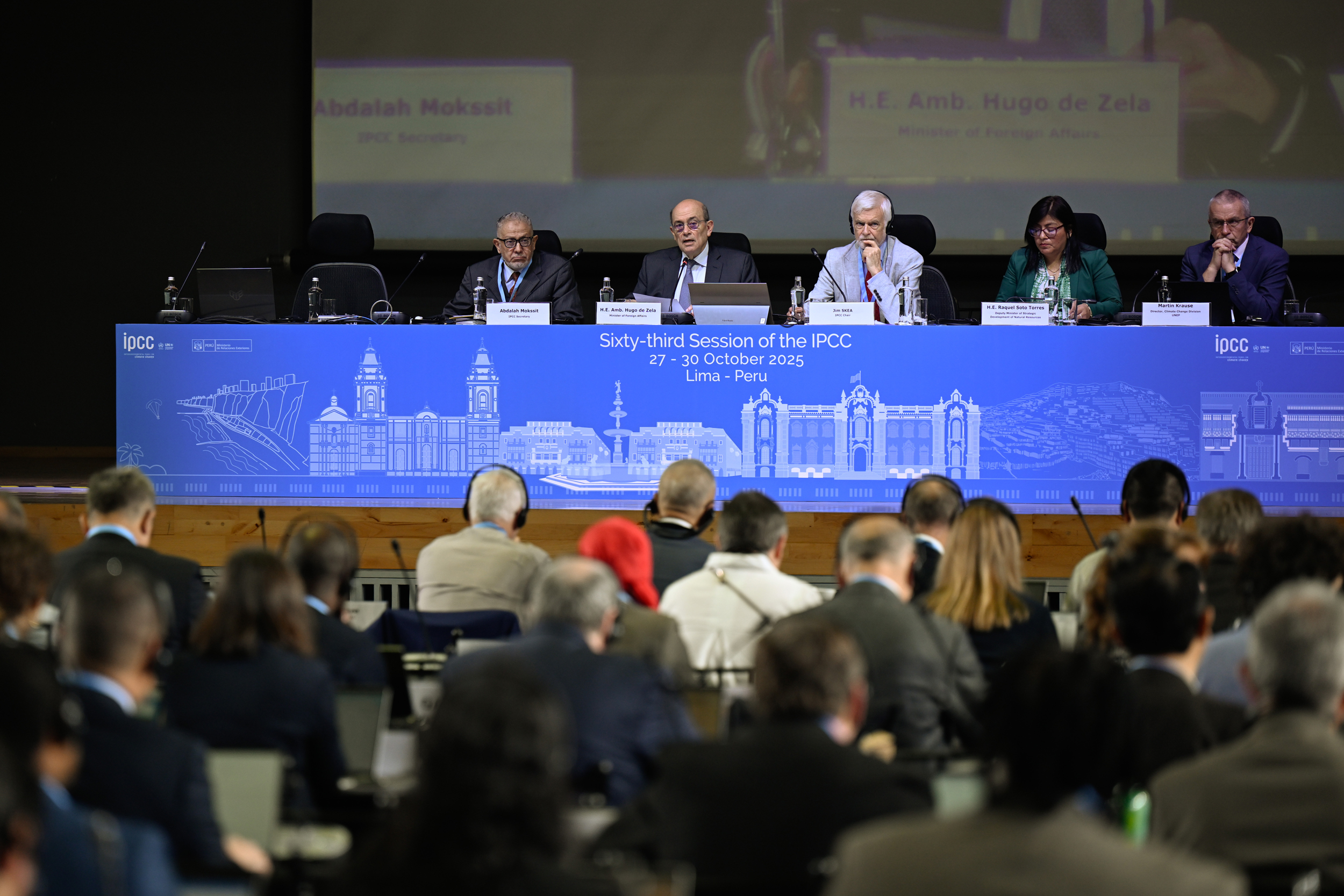JEMEZ PUEBLO, N.M.—Expressions of excitement and relief filled the room as Pueblo of Jemez leaders and community members joined the U.S. Department of the Interior to celebrate a settlement agreement that upholds the pueblo’s entitlement to ancestral land inside the Valles Caldera National Preserve.
“This is our church, the Valles Caldera,” Jemez Pueblo Gov. Peter Madalena said on Sunday during a celebration to close the pueblo’s 12-year fight in federal court to secure part of the national preserve for current and future members of the pueblo.
Among the acreage affected is Banco Bonito, approximately 3,035 acres inside the national preserve in north central New Mexico. It is a landscape that Interior Secretary Deb Haaland described during the ceremony as “irreplaceable,” with mountains, rolling hills and wildlife.
In 2012, the tribe sued the United States over ownership and access to all lands within the 88,900-acre Valles Caldera National Preserve. As the case made its way through court hearings and appeals, the pueblo narrowed its claims to four areas, including Banco Bonito.
The land is ancestral to the pueblo but was privately held beginning in the 1860s until the United States bought the property in 2000 from the owners, according to court documents.
In the pueblo’s complaint, they argued that they never gave up the land and were never consulted about its ownership. Additionally, the area connects them with their creation and they continue to use the area for many purposes.
“Jemez Pueblo’s right of possession, use and occupancy has not been extinguished by conquest, voluntary cession or voluntary abandonment or by any express act of the United States Congress purporting to take or extinguish Jemez Pueblo’s aboriginal Indian title,” the complaint states.
David Yepa, general counsel for the pueblo, explained that the pursuit of reclaiming ancestral land was talked about for generations. When the United States pursued purchasing the land in the late 1990s, the pueblo supported it because it was the strategy that could one day allow them to get the land back, he said.
“Today, this is it,” Yepa said.
Valles Caldera became a national preserve on December 19, 2014. The National Park Service, a bureau within the Interior Department, honored its 10th anniversary last week.
The settlement agreement, signed by the parties in October, recognizes the pueblo’s right to occupy and use Banco Bonito for cultural, traditional and religious purposes. It also has the park service retaining management of Banco Bonito, which will remain accessible to the public.
“It is where we farmed and lived for hundreds of years,” Madalena said. “Securing our aboriginal lands is crucial to the survival of our pueblo, and our traditions and culture.”
The settlement agreement creates a permanent partnership between the pueblo and the park service.
“We are happy to be on this better path with the United States and we are grateful to be able to celebrate with everyone this significant accomplishment that our entire community and the United States have worked very hard on,” Madalena said.
Haaland joined dignitaries from the pueblo in a visit to Banco Bonito on Sunday morning. When they arrived at the event inside the Walatowa Fitness Center, the secretary was greeted with hugs from community members. A member of the pueblo presented her with gifts of artwork.
“That agreement will ensure that the pueblo can return to Banco Bonito to practice the songs, dances and other uses that have coexisted with this place long before it was ever called the United States,” Haaland said.
It is also another example of the work the Interior Department under the Biden administration has done to engage collaboratively with tribal nations to improve management of public lands that comprise ancestral land.
Haaland is a member of the Pueblo of Laguna, one of the 19 pueblo Native American communities in New Mexico. She is in the final weeks of her role as Interior Secretary, the first Native American to serve as a cabinet secretary, a role she was selected for by President Joe Biden four years ago.
“When I became secretary, this was the kind of moment I hoped for—federal leaders and tribal nations standing together in collaborative management of this unmatched landscape,” Haaland said.
She added that this is her last trip to her home state as Interior Secretary.

New Mexico’s Democratic U.S. Sen. Ben Ray Luján came from Washington, D.C. to attend the ceremony.
Luján commended pueblo leadership and members for educating United States officials about the land that was taken from them.
“While I’m here to congratulate all of you, I’m also here to say sorry,” he said. “Because it should not have taken all of these years for the United States government to do what is right.”
Jorge Silva-Bañuelos, superintendent of Valles Caldera National Preserve, has built a relationship with the pueblo through his work, including learning about the importance of Valles Caldera.
“The Jemez people are warriors, and they will always fight for what they believe in,” Silva-Bañuelos told the audience. They have a “deep, deep love” for Valles Caldera, he said, to loud applause.
Both those traits factored into the pueblo starting the legal fight for the right of occupancy in 2012, he added.
“This settlement really marks an opportunity for a new chapter in partnership, in collaboration and I see this as really the beginning of deepening the relationship between the pueblo and the National Park Service,” Silva-Bañuelos said.
This story is funded by readers like you.
Our nonprofit newsroom provides award-winning climate coverage free of charge and advertising. We rely on donations from readers like you to keep going. Please donate now to support our work.
Donate Now
Madalena, the pueblo’s governor, recognized attorneys, tribal council members, religious leadership and the Interior Department for their work on the settlement agreement.
The celebration and gathering also honored elders, grandparents and parents who made sacrifices to ensure the pueblo’s survival, Madalena added.
Christina West, a partner with Barnhouse Keegan Solimon & West, the law firm that represented the pueblo, said many individuals had a role in the settlement agreement, including the land recovery committee and personnel at the Interior Department.
“I think the Biden administration has gone above, beyond what I’ve often seen in terms of working for Indian Country,” said West, who is a member of the Cheyenne and Arapaho Tribes.
About This Story
Perhaps you noticed: This story, like all the news we publish, is free to read. That’s because Inside Climate News is a 501c3 nonprofit organization. We do not charge a subscription fee, lock our news behind a paywall, or clutter our website with ads. We make our news on climate and the environment freely available to you and anyone who wants it.
That’s not all. We also share our news for free with scores of other media organizations around the country. Many of them can’t afford to do environmental journalism of their own. We’ve built bureaus from coast to coast to report local stories, collaborate with local newsrooms and co-publish articles so that this vital work is shared as widely as possible.
Two of us launched ICN in 2007. Six years later we earned a Pulitzer Prize for National Reporting, and now we run the oldest and largest dedicated climate newsroom in the nation. We tell the story in all its complexity. We hold polluters accountable. We expose environmental injustice. We debunk misinformation. We scrutinize solutions and inspire action.
Donations from readers like you fund every aspect of what we do. If you don’t already, will you support our ongoing work, our reporting on the biggest crisis facing our planet, and help us reach even more readers in more places?
Please take a moment to make a tax-deductible donation. Every one of them makes a difference.
Thank you,

















